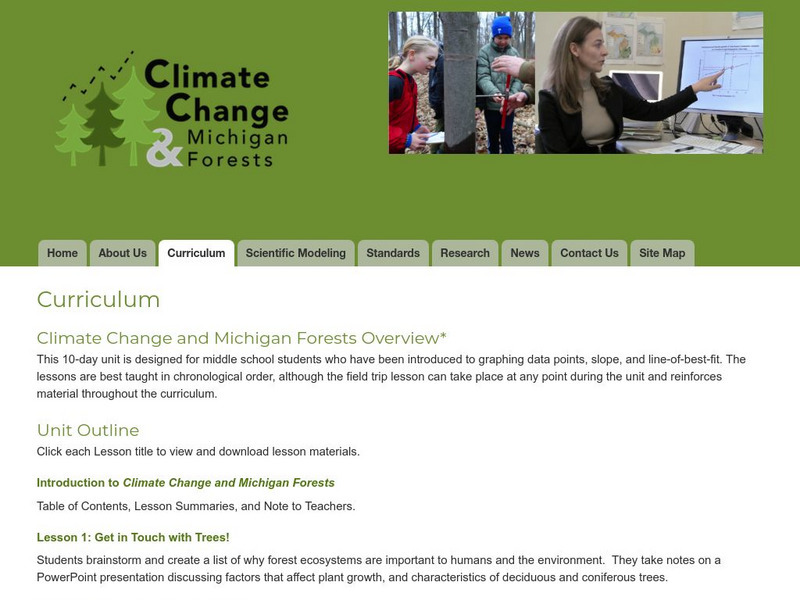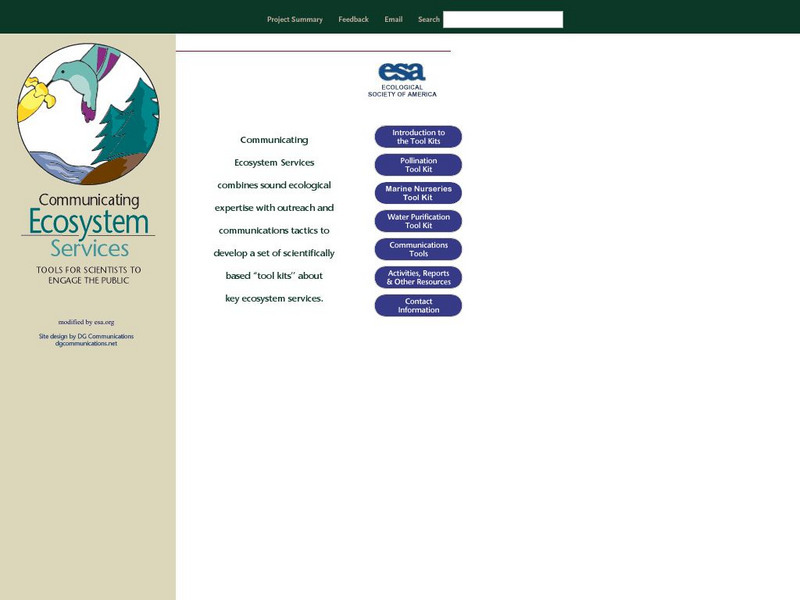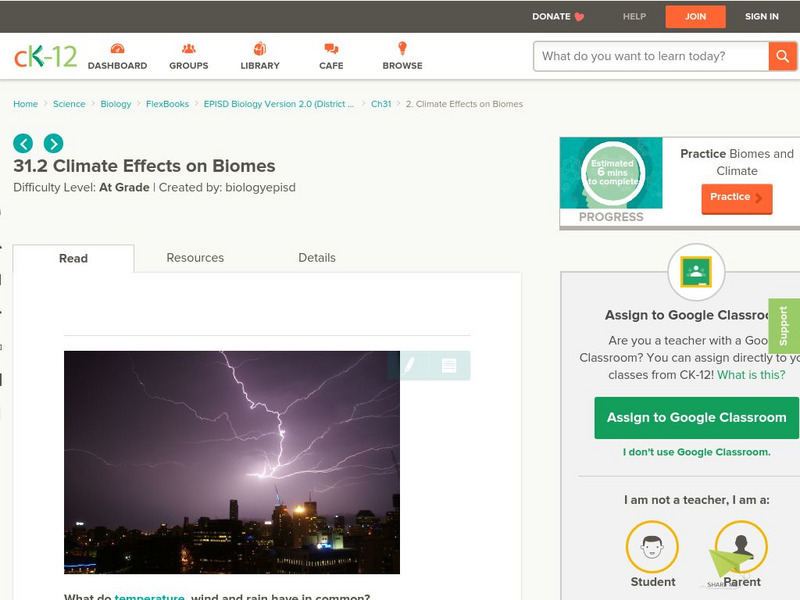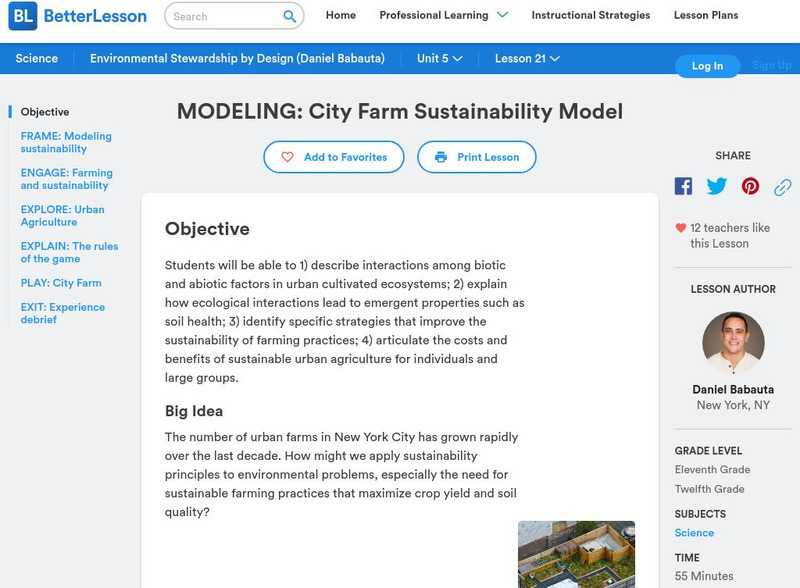CK-12 Foundation
Ck 12: Episd: Terrestrial Biomes
[Free Registration/Login may be required to access all resource tools.] Recognize and explore the variety of terrestrial biomes and understand the differences among them.
Georgia Department of Education
Ga Virtual Learning: Ap Environmental Science: Terrestrial Biomes and Land Use
How we can live sustainably on our natural resources while also preserving enough nature so these resources can be replenished represents one of the most important questions in environmental science. Through learning about terrestrial...
Georgia Department of Education
Ga Virtual Learning: Life and Environment Relationships
In this amazingly comprehensive interactive tutorial you will learn about the characteristics and features of the different biomes on our planet.
Nature Conservancy
Nature Works Everywhere: Native Habitat Garden Tip Sheet
All regions grow special plants naturally which attract specific creatures. This tip sheet will help guide planters to selecting native plants for an area.
TeachEngineering
Teach Engineering: Computer Simulation of the Sonoran Desert Community
The computer program's simulation of a Sonoran desert community should ultimately strengthen the student's comprehension of what is required for a natural ecosystem to sustain itself (remain in balance). This computer simulation program...
TeachEngineering
Teach Engineering: Biodomes
Students explore the biosphere's environments and ecosystems, learning along the way about the plants, animals, resources and natural cycles of our planet. Over the course of lessons 2-6, students use their growing understanding of...
TeachEngineering
Teach Engineering: Got Energy? Spinning a Food Web
Students learn about energy flow in food webs, including the roles of the sun, producers, consumers and decomposers in the energy cycle. They model a food web and create diagrams of food webs using their own drawings and/or images from...
Enchanted Learning
Enchanted Learning: Biomes
Discover the hidden treasures in the different habitats on the earth! The earth is filled with many biomes. Examples of different biomes are listed and include hyperlinks to additional information such as the animals found there.
Science Buddies
Science Buddies: Home Sweet Biome: How Do Plants Grow in Different Environments?
In this science fair project you will learn about biomes and how different climatic conditions affect plant growth. This can explain why some plants and animals are similar in different areas of the country, and in other parts they are not.
Annenberg Foundation
Annenberg Learner: The Habitable Planet: Ecology Lab
Create the parameters of your own ecosystem by choosing which producers and consumers live there. Visualize how the food web operates and species populations change. This simulator mimics the food web within a typical ecosystem and gives...
American Institute of Biological Sciences
Action Bioscience: Ecosystem Services: A Primer
It is humans' responsibility to take care of the Earth's many ecosystems. Many of the daily things we take for granted - e.g., clean water and air, pest control, and protection from severe weather - are results of healthy ecosystems....
University of Michigan
University of Michigan: Climate Change and Michigan Forests
A comprehensive 10-lesson unit on how climate change affects the forests of Michigan. Covers many of the NGSS life science standards for middle school. Includes teacher's guide, PowerPoints, video links, student handouts, standards...
Other
Ohio Department of Education: The Long and Short Story of Ecological Succession
An ecology simulation where each student plays a role of an organism in an forest ecosystem. Students earn and keep track of their own survival points to determine which type of organism is most successful at survival during different...
PBS
Pbs Learning Media: Biome in a Baggie
This ZOOMSci video segment shows how to create self-contained environments and explore how plants grow under different conditions. [3:24]
Other
Institute of Ecotechnics: Bio Sphere 2
Learn about the Biosphere 2 project and the history of Biospherics.
The Wonder of Science
The Wonder of Science: 3 Ess2 2: World Climates
Work samples, phenomena, assessment templates, and videos that directly address standard 3-ESS2-2: world climates.
Globio
Glossopedia: Environments
This article defines "environment" as a collection of animals and plants in a specific landscape and climate. The concept of differing types of environments is introduced. The impact of humans on environments and all environments'...
Other
Ecological Society of America: Communicating Ecosystem Services
A large collection of resources to aid professionals, community members, and educators in communicating the role and importance of ecosystem services. Issues addressed include pollination, marine nurseries, and water purification....
CK-12 Foundation
Ck 12: Episd: Aquatic Biomes
[Free Registration/Login may be required to access all resource tools.] Students will recognize aquatic biomes and understand the adaptations necessary to survive in one.
CK-12 Foundation
Ck 12: Episd: Climate Effects on Biomes
[Free Registration/Login may be required to access all resource tools.] Explore and recognize the way climate alters or creates biomes.
CK-12 Foundation
Ck 12: Episd Biology: Flow of Energy
[Free Registration/Login may be required to access all resource tools.] Students will study how energy flows through an ecosystem and learn about photoautotrophs and chemoautotrophs, the role of decomposers, and of consumers.
Better Lesson
Better Lesson: What Kind of Animals Live on Farms?
A lesson on sustainability of urban farms in particular in New York City. Students learn how to apply sustainability principles to environmental problems. Students will look at the need for sustainable farming practices that maximize...
Utah Education Network
Uen: Animals in the Ecosystems
Write about animal contributions to their environment.
Utah Education Network
Uen: Mini Ecosystems
Third graders will make small-scale environments and will describe interactions between living and nonliving things in their environments.






















